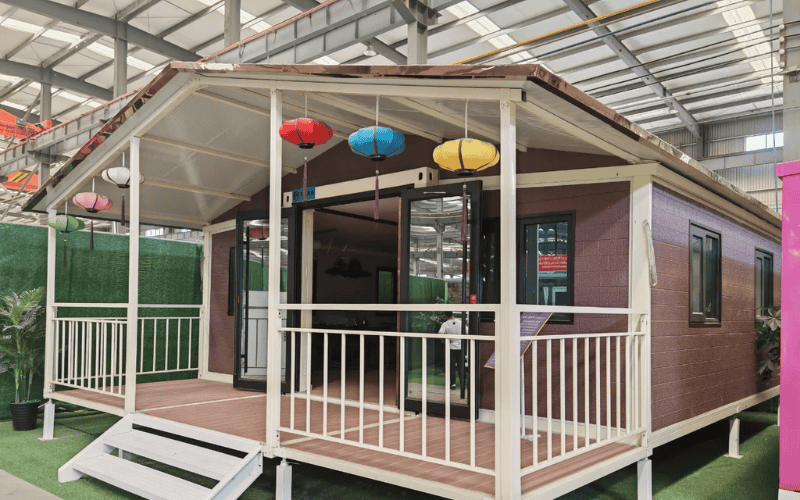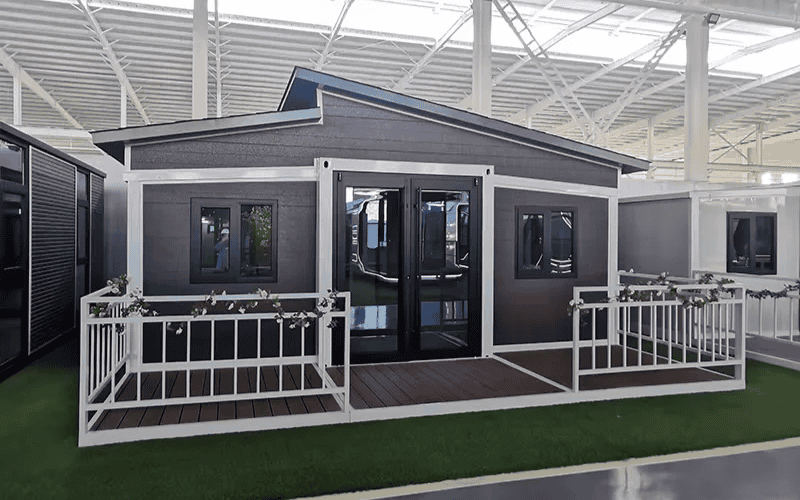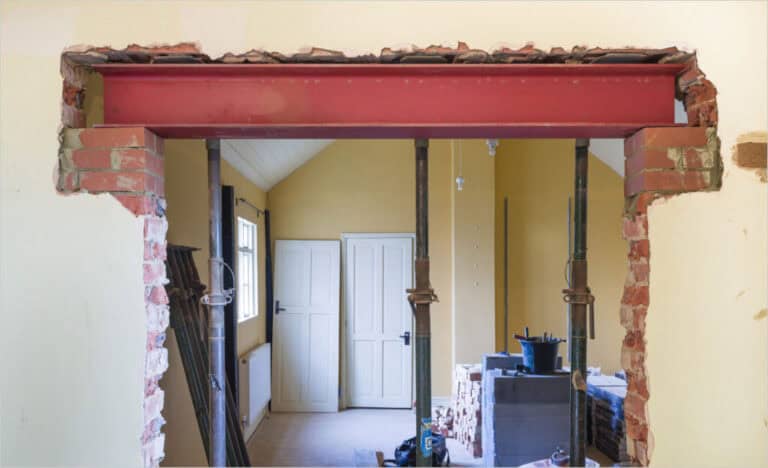Once viewed as temporary or utilitarian, prefabricated homes have undergone a dramatic transformation. Today, they embody innovation, environmental awareness, and design flexibility, becoming the cornerstone of modern housing in cities around the world. But how did we get here?
In this blog, we’ll trace the fascinating journey of prefabricated homes—unpacking their origins, challenges, and resurgences across cultures and time periods—to understand how they became the modern marvels they are today.
Early Prefab Precedents: Seeds of Ideas
Prefab homes are often viewed as a modern innovation, but modular construction has deep historical roots. Long before mass production and industrial techniques emerged, ancient cultures experimented with modular building methods that allowed for efficient, scalable construction. These early examples paved the way for today’s prefab homes.
Ancient Roman Military Camps: Pre-Fabricated Fortifications
The Romans were among the first to use modular construction for military purposes. Roman soldiers built temporary fortifications from prefabricated components—wooden stakes, walls, and gates—that could be easily assembled and disassembled as the army moved. This “modular mobility” laid the foundation for later modular design concepts in construction.
Japanese Modular Architecture: Wooden Temples
In Japan, modular design was integral to traditional architecture, particularly in wooden temples and shrines. Pre-made wooden components like beams and columns were crafted in advance and then assembled on-site. This system allowed for easy rebuilding after natural disasters like earthquakes, influencing both traditional and modern Japanese architectural practices.
China: Modular Designs in Palaces and Military Structures
Ancient China used modular construction for both imperial palaces and military structures. Standardized components, such as roofing, columns, and courtyards, were replicated and transported over long distances, enabling rapid construction of large, complex structures. These modular designs were also used in defensive structures, like the Great Wall, symbolizing both strength and unity.
Europe: Medieval Prefabricated Timber Structures
In medieval Europe, modular techniques were applied to the construction of homes, churches, and defensive structures. Timber-framed buildings were often constructed from prefabricated components that could be quickly assembled, making it easier to rebuild after disasters like fires or storms.
The Industrial Revolution: Mass Production Takes Hold
The Industrial Revolution in the 18th and 19th centuries revolutionized prefab construction. Advances in manufacturing enabled the mass production of standardized building components, which increased the speed and efficiency of construction. The introduction of materials like iron, steel, and concrete further facilitated prefab techniques, laying the groundwork for the prefab homes that emerged in the 20th century.
Early 19th Century: The Manning Portable Cottage
In the 1830s, the Manning Portable Cottage became one of the first examples of prefab homes. Designed for easy assembly and disassembly, this small, portable dwelling was ideal for families on the move or for remote locations. It marked the beginning of prefab homes as a practical solution to housing needs and foreshadowed the widespread adoption of kit homes in the 20th century.
These early precedents laid the foundation for the widespread adoption of prefab homes, particularly as urbanization and industrialization increased the need for affordable, quickly built housing.

The 20th Century: Prefab Takes Center Stage
In the 20th century, prefab homes evolved into a practical solution for the growing demand for affordable, quickly constructed housing. Both global conflicts and industrial advancements paved the way for prefab homes to take center stage in the housing industry.
Early 20th Century: The Rise of Prefab Homes
United States: Sears, Roebuck & Co. Mail-Order Homes (1908-1940)
- In the early 1900s, Sears, Roebuck & Co. revolutionized homebuilding with their mail-order kit homes. Customers could order pre-cut homes from a catalog, which would be delivered and assembled on-site. Over 100,000 homes were sold, making prefab housing more accessible to the middle class.
United Kingdom: Wartime Prefabricated Housing
- During World War II, the UK faced a housing crisis due to bombings. Prefabricated homes, like the “Arcon” house, were used to quickly provide affordable, temporary housing for displaced families. These homes could be assembled in days, offering a quick solution to the crisis.
Soviet Union: Post-War Housing Solution
- After WWII, the Soviet Union turned to prefab housing to address its widespread housing shortages. Khrushchyovkas, constructed with prefabricated concrete panels, became a standard form of housing in the 1950s and 1960s, quickly providing homes for millions.
Japan: Post-War Reconstruction
- In the wake of WWII, Japan used prefab homes to rebuild cities that had been devastated by bombing. Modular, wooden prefab houses allowed for quick urban recovery and provided temporary housing for displaced citizens.
Post-War Boom and the Global Spread of Prefab Homes
The Urgent Need for Affordable Housing
- Post-war housing shortages around the world created a massive demand for quick and affordable homes. Governments turned to prefab solutions to meet these needs, often using mass production techniques to build homes quickly and at lower cost.
Iconic Examples: Lustron Homes and Dymaxion House
- In the U.S., Lustron homes—prefabricated metal houses—became a symbol of post-war innovation. Meanwhile, the Dymaxion House, created by architect Buckminster Fuller, showcased the potential for futuristic, mass-produced housing, though it never saw widespread use.
Eastern Europe: Prefabs in the Soviet Bloc
- In Eastern Europe, especially in Soviet-controlled countries, prefab housing became central to post-war rebuilding. Khrushchyovkas spread across the region, providing mass housing solutions. These homes were functional but often criticized for their lack of aesthetic appeal.
Modernist Influence on Prefab Design
- Modernist architects embraced prefab homes as a way to merge design with efficiency. These homes weren’t just utilitarian—they reflected the minimalist ideals of modern architecture, with clean lines and open floor plans, influencing future prefab designs.
The 20th century marked the beginning of prefab homes as a mainstream solution to global housing crises. From the United States to Europe and Asia, prefab homes provided fast, affordable, and practical solutions during times of war and economic need. Iconic designs like the Lustron home and Dymaxion House influenced the development of modern prefab housing, shaping the future of efficient, modular living.
Challenges and Evolution: Perfection of the Prefabrication Concept
By the mid-20th century, prefab homes faced a decline, primarily due to negative perceptions and competition from traditional housing. However, advancements in technology, the rise of environmental consciousness, and design innovations helped bring prefab homes back into the spotlight.
Mid-20th Century: Decline of Prefab Homes
Negative Perceptions: Prefab homes were seen as cheap, temporary, and low-quality. This stigma, combined with the appeal of traditional, site-built homes, led to a decrease in prefab housing popularity after the post-war demand subsided.
Competition from Traditional Homes: As economies improved, people began to prefer custom-built, permanent homes, further sidelining prefab homes in favor of more traditional options.
Revival of Prefab Homes: Driving Factors
Technological and Material Advancements: By the 1970s and 1980s, improvements in materials and production techniques led to stronger, more durable prefab homes, addressing many of the earlier criticisms.
Growing Demand for Sustainable Housing: As interest in sustainability grew, prefab homes became more attractive due to their energy efficiency, lower construction waste, and use of eco-friendly materials. This shift reflected a growing desire for homes that were both affordable and environmentally responsible.
Global Leaders in Sustainable Design: Countries like Japan, Sweden, and Finland focused on making prefab homes more eco-friendly with features like solar panels and better insulation, blending sustainability with modern design.
Customization in the U.S. and Canada: In North America, prefab homes evolved into customizable, design-forward solutions. Companies began offering a wide range of styles, making them more appealing to homeowners seeking both efficiency and aesthetics.
In summary, by the late 20th century, prefab homes had shed their negative reputation, embracing technology, sustainability, and design innovation. This transformation made them a more attractive, modern alternative to traditional housing.

Prefab Today: A Thriving Industry
Prefab homes have become a dynamic and diverse sector within the global housing market, with increasing innovation and demand across the world. Today, prefab homes are not only practical but also stylish, sustainable, and customizable.
Current State of the Prefab Housing Industry
Global Trends: As more families seek affordable, quick-to-build, and flexible housing options, prefab homes are becoming a preferred choice. Their adaptability and cost-effectiveness are key selling points, especially as more people recognize their potential to provide high-quality living at lower prices.
Europe: In countries like Germany and the Netherlands, prefab homes are a key part of the push toward energy-efficient, sustainable construction. These countries are pioneers in creating highly efficient, green prefab designs that meet rigorous environmental standards.
United States: In the U.S., prefab homes are especially popular in areas prone to natural disasters, such as California, where homes are built to withstand earthquakes. The versatility of prefab construction makes it an attractive option for affordable, durable, and disaster-resilient housing.
China: With rapid urbanization, China has increasingly turned to prefab buildings to meet the demands of its growing cities. The use of prefab homes in large-scale infrastructure projects has helped streamline construction while addressing the housing needs of millions.
Japan: Japan continues to innovate in prefab construction, focusing heavily on earthquake resistance and energy efficiency. Prefab homes in Japan often feature advanced seismic design and cutting-edge energy-saving technologies.
Emerging Trends in Prefab Construction
Sustainability Focus
- There is an ongoing shift toward using more sustainable materials and construction methods. From recyclable materials to energy-efficient designs, prefab homes today prioritize eco-friendliness without compromising on quality or style.
Modular Homes with More Customization
- Prefab homes are evolving into modular systems that offer greater flexibility in design. Homebuyers can now customize layouts, finishes, and configurations to suit their personal tastes and needs.
3D-Printed Homes
- The rise of 3D printing technology is pushing the boundaries of prefab home design. This innovation allows for more intricate, unique designs at a lower cost, making high-quality prefab homes accessible to a wider range of people.
Smart Homes
- Prefab homes are increasingly integrating smart technology. From automated lighting and heating to energy-efficient systems, smart homes are enhancing the functionality and convenience of prefab housing while improving energy savings.
Today, the prefab housing industry is thriving, driven by technological advancements, sustainability trends, and an increasing demand for cost-effective, customizable homes. With the continued evolution of design and materials, prefab homes are poised to play a significant role in shaping the future of housing worldwide.
Related Reading:

